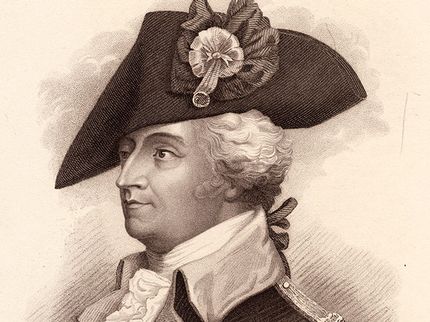Almost 250 years ago, some of the greatest political minds the world has ever produced were embroiled in a war for independence against the British Empire. The American Revolution inspired many singular people to respond to its call, and they left an indelible mark on history. However, whether it was in battle, in sickbeds, or in duels, they all passed from this world to the next. But was that the end of their stories? The tales below suggest not, telling stories of these great American ghosts whose spirits are said to still walk the Earth.
1. George Washington

- Photo Credit: Wikipedia
The most famous continental general of the revolution and the young republic’s first president, George Washington is a man so famous he doesn’t even need this brief introduction. It’s fitting, then, that a reputation that has been so enduring is accompanied by a lasting legend. Washington’s ghost is said to haunt one or more of any number of historic buildings, but most stories are concentrated on his home in Mount Vernon, though some claim to see him in Gettysburg as well.
2. Alexander Hamilton

- Photo Credit: Wikipedia
Alexander Hamilton probably holds the distinction of being the best-known treasurer in America. He’s also one of only two people who were never a U.S. President to appear on currently circulated paper currency. His political ambitions may have been thwarted, but Hamilton’s legacy lives on, not only in the nation’s financial institutions but also in the house where he died. 27 Jane Street in Greenwich Village, New York City, supposedly houses Hamilton’s ghost—and he seems to be fascinated by modern technology, since the owners report poltergeist-like activity. However, Hamilton himself will rarely manifest briefly, apparently uninterested in the house’s inhabitants.
3. “Mad” Anthony Wayne

- Photo Credit: Wikipedia
General Anthony Wayne was one of the most successful, brilliant, and legendary of the Continental Army. His bold tactics and willingness to go on the offensive against the better-equipped British troops earned him an impressive reputation that was unfortunately cut short by illness. A few years after he was buried, his bones were dug up and transported along what is now Route 322 so they could be buried forever in the family plot in Radnor, Pennsylvania. According to a legend so popular that tour guides at Valley Forge share it, some of Wayne’s bones were lost in transit, and on January 1 every year, the general’s birthday, his ghost searches Route 322 for his missing remains.
4. Aaron Burr

- Photo Credit: Wikimedia Commons
Aaron Burr was once a political force who went toe-to-toe with Thomas Jefferson in a contest for the presidency, and is half of the reason why Presidents and Vice Presidents run on the same ticket rather than individually. However, he’s better known today for killing Alexander Hamilton in a duel that ended Burr’s political career. After he fled from the duel to evade authorities, Burr rested for a time in New Hope, Pennsylvania. His story while still alive doesn’t end there, but his ghost seems to have chosen the town for his home. In and around the Aaron Burr House, you can see the ghost peering around corners, checking behind himself as he walks and examining people suspiciously.
Related: An American Mystery: What Happened to Theodosia Burr?
5. Thomas Jefferson

- Photo Credit: Wikimedia Commons
Speaking of the third President, drafter of the Declaration of Independence and influential philosopher, polyglot and political theorist, Thomas Jefferson himself seems to still be attached to the land he dedicated his life to improving. Outside of Charlottesville, Virginia, stands Jefferson’s self-designed plantation, Monticello, which his ghost still walks around. However, some people, report hearing whistling (a habit of Jefferson’s), and others claim that Jefferson himself walked up to them and asked what they were doing there. Interestingly, Jefferson died deeply in debt and anxious over his inability to pass Monticello on to his heirs, who had to sell it. Perhaps his worry provoked his spirit to continue on in the property in death so that, even if it could no longer be his, he could at least preserve it.
Featured photo of George Washington Crossing the Delaware River: Wikipedia
